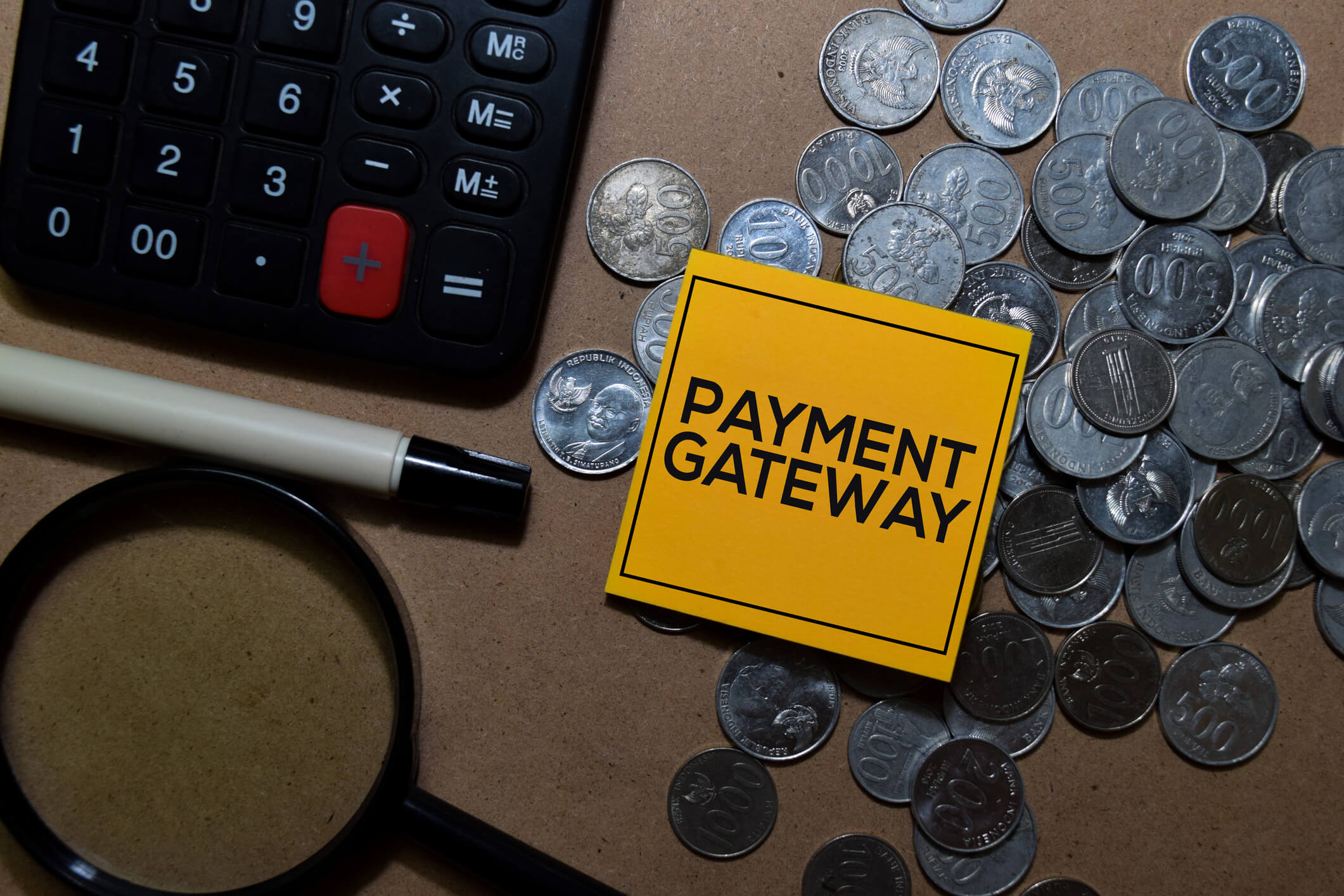
By American March 27, 2024
In today’s digital age, having a reliable and secure payment gateway is crucial for any business that operates online. A payment gateway is a technology that allows businesses to accept and process online payments from their customers. It acts as a bridge between the customer’s payment information and the merchant’s bank account, ensuring a smooth and secure transaction.
The importance of a payment gateway cannot be overstated. It is the backbone of any e-commerce business, enabling customers to make purchases conveniently and securely. Without a payment gateway, businesses would have to rely on manual payment processing methods, which are time-consuming and prone to errors.
A payment gateway provides several key benefits for businesses. Firstly, it allows businesses to accept a wide range of payment methods, including credit cards, debit cards, and digital wallets. This ensures that customers have multiple options to choose from, increasing the likelihood of completing a purchase.
Secondly, a payment gateway ensures the security of online transactions. With the increasing prevalence of cybercrime, customers are becoming more cautious about sharing their payment information online. A payment gateway encrypts sensitive data, such as credit card numbers, to protect it from unauthorized access. This instills trust in customers and encourages them to make online purchases.
Furthermore, a payment gateway streamlines the payment process, making it quick and convenient for both businesses and customers. It automates tasks such as payment authorization, settlement, and reconciliation, saving businesses time and effort. Customers also benefit from a seamless checkout experience, reducing the likelihood of cart abandonment.
Understanding Payment Gateways
A payment gateway acts as the intermediary between your online storefront and the payment processor that receives the payment from your customer. It is the digital equivalent of a physical point-of-sale terminal located in most retail outlets.
How Payment Gateways Work: A Step-by-Step Explanation
To understand how payment gateways work, let’s break down the process into a step-by-step explanation:
- Step 1: Customer initiates a payment – When a customer decides to make a purchase on an e-commerce website, they enter their payment information, such as credit card details, into the payment gateway.
- Step 2: Encryption and tokenization – The payment gateway encrypts the customer’s payment information to ensure its security. It also tokenizes the data, replacing sensitive information with a unique identifier called a token.
- Step 3: Authorization request – The payment gateway sends an authorization request to the customer’s bank or credit card issuer to verify the validity of the payment information and ensure that the customer has sufficient funds.
- Step 4: Authorization response – The customer’s bank or credit card issuer sends an authorization response to the payment gateway, indicating whether the payment is approved or declined.
- Step 5: Transaction settlement – If the payment is approved, the payment gateway settles the transaction by transferring the funds from the customer’s bank account to the merchant’s bank account.
Factors to Consider When Selecting a Payment Gateway
Choosing the ideal payment gateway for your online venture is a critical decision that influences your business’s operational fluidity, security posture, and overall customer experience. Here, we explore the essential factors you should consider to ensure that your selection not only meets your current requirements but also supports your future growth ambitions.
Seamless Integration Capabilities
The ease with which a payment gateway integrates into your existing ecosystem (website, eCommerce platform, mobile app) is paramount. A smooth integration process minimizes disruption to your operations and reduces the learning curve for your team. Look for solutions that offer comprehensive API support, compatibility with major eCommerce platforms, and customizable options that align with your brand’s aesthetic and functional needs.
Comprehensive Security Measures
In an era where data breaches are increasingly common, the security of a payment gateway cannot be overstated. Prioritize gateways that offer robust security protocols, including encryption, tokenization, and compliance with international security standards such as PCI DSS. A secure payment gateway not only protects sensitive financial information but also reinforces your brand’s credibility and trustworthiness.
Transparent and Reasonable Pricing
Understanding the cost structure of a payment gateway is crucial for budget planning. Evaluate not just the transaction fees but also any additional costs such as setup fees, monthly or annual maintenance fees, and chargeback fees. Opt for gateways that offer clear, upfront pricing without hidden charges, ensuring that their cost aligns with your business model and sales volume.
Versatile Payment Options and Currency Support
To cater to a diverse customer base, your chosen gateway should support a wide array of payment methods, including credit cards, debit cards, e-wallets, and bank transfers. Additionally, if your business serves an international market, multi-currency support is essential to facilitate seamless, cross-border transactions, enhancing the customer experience and potentially increasing sales.
User-Friendly Checkout Experience
The checkout process is a critical touchpoint in the customer journey. A payment gateway should offer a streamlined, intuitive checkout experience, minimizing barriers to completing a purchase. Features such as one-click payments, guest checkout options, and mobile optimization are key to reducing cart abandonment rates and enhancing customer satisfaction.
Reliable Customer Support
The quality of customer support provided by the payment gateway can significantly impact your ability to resolve issues swiftly and maintain smooth operations. Look for providers that offer 24/7 support through various channels, including live chat, email, and phone. Prompt, knowledgeable support can be invaluable, especially during peak sales periods or when encountering technical difficulties.
Scalability for Growth
As your business evolves, so too will your payment processing needs. A scalable payment gateway should accommodate your growing transaction volumes, expand to new markets, and integrate with additional services as needed. This foresight ensures that your chosen solution remains compatible with your business’s trajectory, avoiding the need for disruptive migrations or integrations in the future.
Popular Payment Gateway Providers: A Comparison
As businesses and consumers alike seek seamless, secure, and efficient methods to exchange financial value, a select group of enterprises have risen to prominence, offering sophisticated solutions to meet these demands.
- Stripe: A titan in the realm of digital finance, this entity distinguishes itself through an emphasis on developer-friendly interfaces and comprehensive APIs. Catering to a wide range of industries, Stripe provides a versatile platform that supports numerous currencies and payment methods, enabling global commerce with ease.
- PayPal: Esteemed for its user-centric approach, PayPal remains a favorite among consumers for its straightforward, secure, and speedy service. With a venerable presence in the market, it has cultivated trust and reliability, offering both individual and business accounts comprehensive financial transaction services.
- Square: Originally gaining fame for its innovative mobile payment system, Square has expanded its offerings to encompass a full suite of financial services tailored for small to medium-sized businesses. Its integrated hardware and software solutions empower merchants to manage sales, inventory, and customer relationships all in one place.
- Adyen: Serving a global clientele, Adyen focuses on delivering a frictionless payment experience across online, mobile, and in-store channels. Its platform is designed for businesses looking to streamline their payment processes and enhance customer satisfaction, supporting a vast array of payment methods worldwide.
- Authorize.Net: A pioneer in the field, Authorize.Net offers robust, secure payment solutions for merchants of all sizes. Its platform excels in flexibility, providing a range of tools that facilitate not only payment processing but also fraud prevention and data management.
- Worldpay: As part of a larger financial services group, Worldpay stands out for its comprehensive international payment processing capabilities. Serving businesses across the globe, it offers tailored solutions that cater to the unique needs of various markets and industries.
- Braintree: A subsidiary of PayPal, Braintree specializes in mobile and web payment systems for e-commerce companies. Its strength lies in its ability to provide a smooth checkout experience for users while supporting a multitude of payment options, including popular digital wallets.
Each of these providers brings its own strengths to the table, from robust security measures and wide-reaching currency support to user-friendly interfaces and extensive customization options. For businesses looking to thrive in the digital marketplace, selecting the right payment gateway partner is crucial. It involves considering not only transaction fees and payment methods supported but also the provider’s reputation for reliability, customer service, and technological innovation.
Payment Gateway Integration for Your Website
Integrating a financial transaction interface into an online platform is a pivotal step for businesses venturing into the e-commerce domain. This process, crucial for facilitating sales and services, involves several nuanced steps and considerations. Let’s explore a structured approach to embed these capabilities into your digital storefront, ensuring a smooth and secure exchange of monetary value between your enterprise and its clientele.
Step 1: Choose Your Financial Transaction Processor
The initial phase involves selecting an appropriate facilitator for your online transactions. Factors to consider include transaction fees, supported payment methods (credit cards, digital wallets, bank transfers), and the geographical locations of your customer base. Researching and comparing different services will help you find a solution that aligns with your business model and growth aspirations.
Step 2: Establish a Merchant Account
Depending on your chosen service, you may need to set up a merchant account—a type of bank account allowing your business to accept and process electronic payment card transactions. Some platforms provide a streamlined process by bundling the merchant account with their service, simplifying setup and management.
Step 3: Secure Your Platform
Security is paramount in all financial transactions. Ensuring your website adheres to the Payment Card Industry Data Security Standard (PCI DSS) is essential. This may involve encrypting data transmissions through Secure Sockets Layer (SSL) certification, implementing robust fraud prevention measures, and conducting regular security audits.
Step 4: Integration
Here, the technical work begins. Most payment facilitators offer comprehensive integration guides, SDKs (Software Development Kits), and APIs (Application Programming Interfaces) to streamline this process. Whether you’re embedding a simple payment button or building a custom checkout experience, these resources are invaluable. If you’re not technically inclined, consider hiring a developer or utilizing a web development platform with built-in payment integration capabilities.
Step 5: Testing
Before launching your payment system to the public, thorough testing in a sandbox environment is crucial. This stage allows you to verify the functionality of the payment process, including transaction success and failure scenarios, data validation, and user experience. Ensuring everything works flawlessly under various conditions will prevent potential issues for your customers.
Step 6: Go Live and Monitor
After thorough testing, you’re ready to launch your payment system. However, your job isn’t done yet. Continuous monitoring for any issues is essential, as is being prepared to address customer concerns and technical glitches promptly. Additionally, staying updated with your payment processor’s latest features and security updates will help you maintain an efficient and secure system.
Step 7: Compliance and Reporting
Maintaining compliance with legal and financial regulations in your region and the regions you serve is non-negotiable. Regular reporting and reconciliation of transactions will be part of your operational procedures. Ensuring accuracy in these processes helps in managing finances effectively and staying compliant with tax laws and financial regulations.
By following these steps and continuously seeking to enhance the customer payment experience, businesses can effectively integrate a payment gateway into their website. This not only streamlines financial transactions but also builds trust with customers, encouraging repeat business and fostering growth in the competitive e-commerce landscape.
Security Measures and Fraud Prevention in Payment Gateways
In the realm of digital transactions, safeguarding the exchange of financial information and assets is paramount. The architecture of modern payment facilitation platforms incorporates robust defenses and proactive fraud mitigation strategies to ensure the integrity and trustworthiness of online commerce. To ensure the security of online transactions, payment gateways employ various measures and technologies. These include:
Encryption: The Foundation of Digital Security
At the core of transactional security lies encryption. This technology transforms sensitive data into coded messages during transmission, rendering it indecipherable to unauthorized parties. Utilizing algorithms like SSL (Secure Sockets Layer) and its successor, TLS (Transport Layer Security), payment platforms ensure that customer details remain confidential and intact from end to end.
Authentication Protocols: Verifying Identities
To further fortify defenses, authentication mechanisms are deployed to confirm the identities of parties involved in a transaction. Two-factor authentication (2FA), employing a combination of something the user knows (like a password) and something the user has (such as a mobile device), significantly reduces the risk of unauthorized account access. Additional layers, like biometric verification, are becoming increasingly prevalent, offering even greater security through fingerprints or facial recognition technology.
PCI DSS Compliance: A Benchmark for Security
The Payment Card Industry Data Security Standard (PCI DSS) represents a universal set of guidelines designed to ensure the secure handling of card information by businesses. Compliance with these standards is not optional but a mandatory measure for any entity involved in processing, storing, or transmitting credit card data. Adhering to these rigorous requirements signifies a platform’s commitment to maintaining a secure transaction environment.
Fraud Detection Systems: The Watchful Guardians
Advanced fraud detection systems use machine learning algorithms and behavioral analysis to monitor transactions in real time. These systems are adept at identifying patterns and anomalies that may indicate fraudulent activity, such as unusual purchase amounts or rapid succession of transactions. By flagging suspicious behavior, these tools play a critical role in preempting potential fraud.
Tokenization: Minimizing Data Exposure
Tokenization is a process where sensitive data elements, like credit card numbers, are replaced with non-sensitive equivalents, known as tokens, which have no exploitable value. This technique ensures that in the event of a data breach, the information obtained by attackers is useless, thereby protecting the customer’s financial information.
Regular Security Audits: Ensuring Continuous Protection
To maintain a fortified defense against evolving threats, payment gateways undergo regular security audits. These comprehensive evaluations assess the effectiveness of the platform’s security measures and identify potential vulnerabilities. By adhering to a schedule of periodic reviews and updates, payment systems can adapt to new threats and enhance their security protocols accordingly.
Educating Merchants and Consumers: A Collective Effort
Lastly, the fight against fraud is not solely the responsibility of payment platforms. Educating merchants and consumers about safe online practices plays a crucial role in minimizing risks. Awareness initiatives on secure password creation, recognizing phishing attempts, and verifying the authenticity of websites contribute significantly to the overall security of online transactions.
Optimizing User Experience with a Seamless Payment Gateway
A seamless payment gateway is essential for optimizing the user experience and increasing conversion rates. Here are some tips to ensure a smooth payment experience for your customers:
- Simplify the checkout process – Minimize the number of steps required to complete a purchase. Avoid asking for unnecessary information and provide clear instructions throughout the checkout process.
- Offer multiple payment options – Provide your customers with a variety of payment options, including credit cards, debit cards, digital wallets, and alternative payment methods. This allows them to choose the method they are most comfortable with.
- Mobile optimization – With the increasing use of mobile devices for online shopping, it is crucial to optimize your payment gateway for mobile users. Ensure that the payment process is mobile-friendly and responsive on different screen sizes.
- Guest checkout option – Offer a guest checkout option for customers who do not want to create an account. This reduces friction and allows for a faster checkout process.
- Clear error messages – If a customer encounters an error during the payment process, provide clear and concise error messages that explain the issue and suggest a solution. This helps to minimize frustration and confusion.
Payment Gateway Fees and Pricing Models: What to Look for
When navigating the landscape of digital transaction facilitators, understanding the intricacies of their charging structures is crucial. These platforms, essential for processing online payments, come with a variety of fees and pricing schemes. When selecting a payment gateway, it is important to consider the fees and pricing models associated with the service. Here are some key factors to look for:
Transaction Fees: The Core Expense
The most significant cost associated with these services is usually the transaction fee, which is often a combination of a fixed amount plus a percentage of the transaction value. This fee can vary based on factors such as the type of card used (credit vs. debit), the card’s issuing bank, and whether the transaction is considered domestic or international.
Monthly and Setup Fees: Fixed Costs
Some platforms impose a monthly fee, which may cover certain features or a predetermined number of transactions. Setup fees are less common but can be encountered, especially with services that require more complex integration or offer advanced features.
Chargeback Fees: The Hidden Cost
Chargebacks represent a financial risk for merchants, occurring when customers dispute a transaction. Beyond the loss of revenue from the transaction itself, merchants may also incur chargeback fees, further impacting profitability.
Tips for a Smooth Transition to a New Payment Gateway
If you are considering switching to a new payment gateway provider, here are some tips to ensure a smooth transition:
1. Research and compare providers – Take the time to research and compare different payment gateway providers. Consider their features, pricing, customer support, and compatibility with your e-commerce platform.
2. Notify your customers – Inform your customers in advance about the upcoming change in payment gateway. Provide clear instructions on how to update their payment information if necessary.
3. Test the new payment gateway – Before fully transitioning to the new payment gateway, thoroughly test its functionality and integration with your e-commerce platform. Make test transactions to ensure that everything is working as expected.
4. Update your website and documentation – Update your website and any relevant documentation, such as FAQs and payment policies, to reflect the change in payment gateway. Ensure that the new payment options are clearly communicated to your customers.
5. Monitor the transition – Keep a close eye on the transition process and monitor any issues or disruptions that may arise. Address any customer concerns promptly and provide assistance as needed.
Frequently Asked Questions (FAQs)
Q: What is a payment gateway, and why do I need one for my business?
A: A payment gateway is a technology that allows businesses to accept and process online payments from their customers. It is essential for any business that operates online, as it enables convenient and secure transactions.
Q: How does a payment gateway ensure the security of online transactions?
A: Payment gateways employ various security measures, such as encryption and tokenization, to protect sensitive customer data. They also use fraud detection algorithms to identify and prevent fraudulent transactions.
Q: Are there any specific features I should look for in a payment gateway?
A: Some important features to consider include security measures, integration capabilities, support for multiple payment methods, international transaction support, and reliable customer support.
Q: Can I integrate multiple payment gateways into my e-commerce platform?
A: Depending on your e-commerce platform, it may be possible to integrate multiple payment gateways. However, it is important to consider the complexity and potential conflicts that may arise from using multiple gateways.
Q: What are the typical fees associated with using a payment gateway?
A: Typical fees include transaction fees, monthly fees, setup fees, international fees, and chargeback fees. The specific fees and pricing models vary between payment gateway providers.
Q: How long does it take to set up a payment gateway for my business?
A: The setup time can vary depending on the payment gateway provider and the complexity of your integration. It can range from a few hours to a few days.
Q: Can I switch to a different payment gateway provider in the future?
A: Yes, it is possible to switch to a different payment gateway provider in the future. However, it is important to consider the potential impact on your business and plan the transition carefully.
Q: How can I optimize the checkout process for my customers using a payment gateway?
A: To optimize the checkout process, simplify the steps required to complete a purchase, offer multiple payment options, optimize for mobile devices, provide clear error messages, and offer a guest checkout option.
Conclusion
In conclusion, payment gateways play a pivotal role in the modern digital commerce landscape, acting as essential conduits for secure and efficient online transactions. For businesses venturing into or operating within the e-commerce domain, selecting a robust, reliable payment gateway is not merely an operational necessity; it’s a strategic decision that significantly impacts customer trust, conversion rates, and overall business growth.



